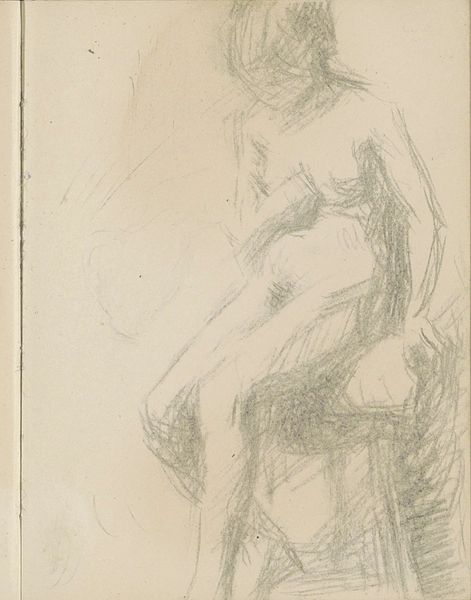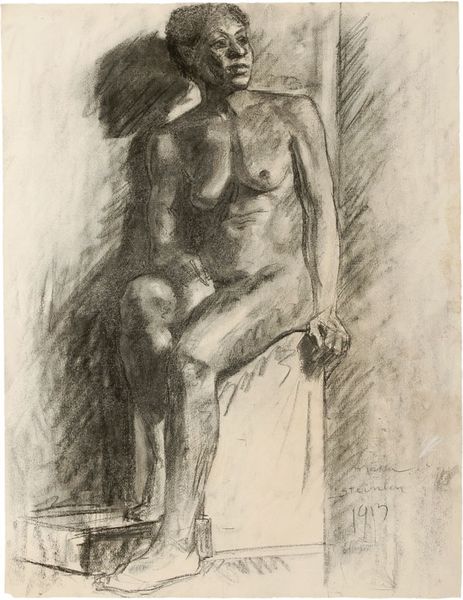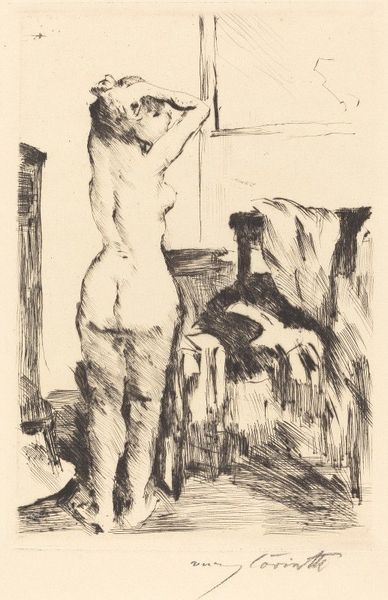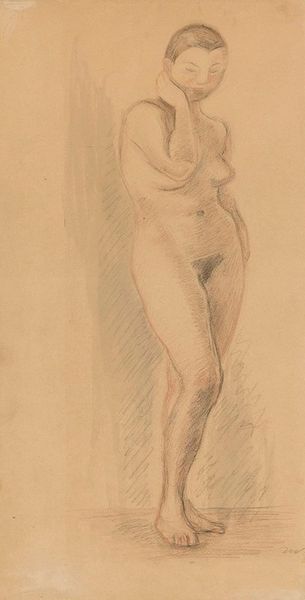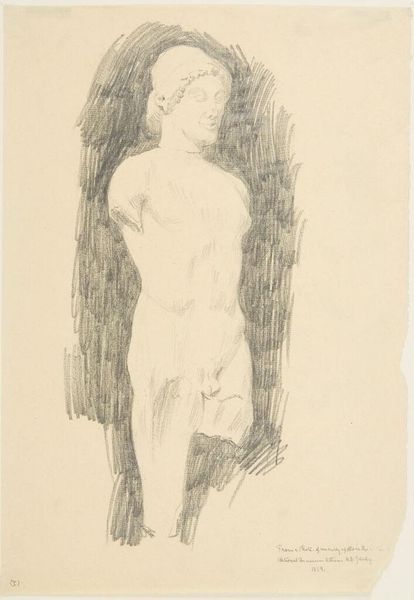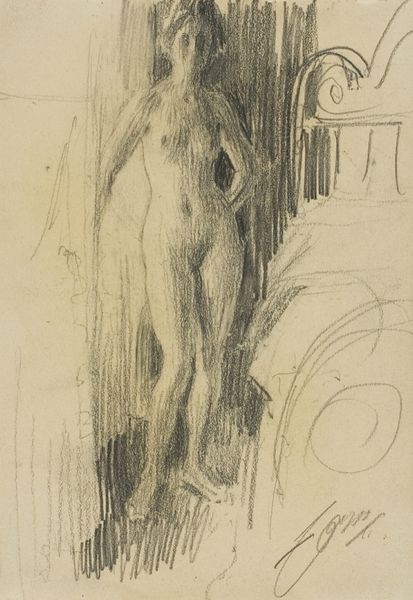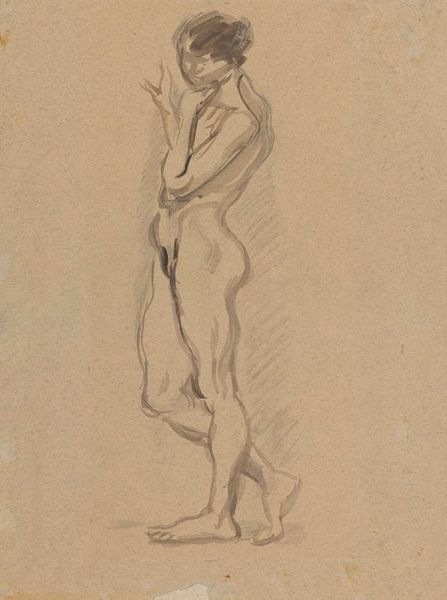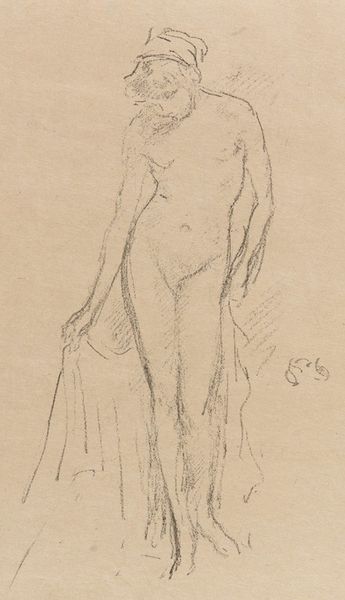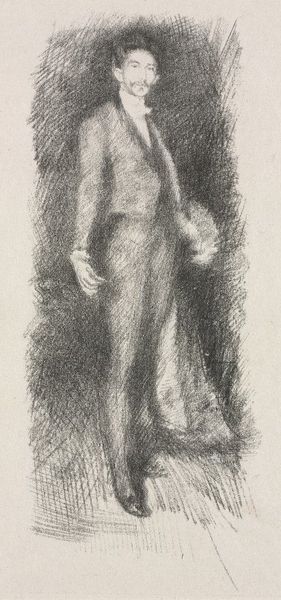
Copyright: Public Domain: Artvee
Curator: This is "Achterzijde van een staande naakte vrouw," or "Back of a Standing Nude Woman," a pencil drawing on paper completed in 1916 by Reijer Stolk. Editor: Wow, there's a fragility to it, a fleeting moment captured in the most delicate way. It’s just a sketch, but the lines are so tender, the shading creates such an intimate space. Like a whisper on paper. Curator: Indeed. The choice of depicting the figure from the back invites reflection on vulnerability, but also agency. Consider the era – 1916. The representation of the female nude at that time, even in sketches, had strong ties to societal power dynamics. Where does this particular representation fit into that narrative? Editor: It feels different, less...confrontational, maybe? It’s soft, rounded. There’s this quality of the figure just being, rather than performing. The unfinished background only intensifies the focus on the woman's form. It almost feels like peeking into a private moment, observing without intruding. Curator: Right. And what readings of the “private moment” are activated by the knowing gaze, one from a male artist capturing the scene? It prompts a discussion about the artist's gaze, how power operates within representation, and the silent dialogues that exist between the artist, model, and viewer. Is Stolk capturing the form, or attempting to capture something more elusive, like the feeling of the model's presence? Editor: Hmmm...it’s like he's tracing a feeling, an echo. Not aiming for perfection, but something truer. Perhaps in its imperfection lies an attempt at authentic representation, the bare minimum needed to transfer her presence onto the paper. The incompleteness emphasizes a moment of simply "being". Curator: And how does that 'being' resonate within current discourse on body positivity and inclusive representation, considering historical exclusion and the frequent othering of marginalized bodies? How does the art participate or resist this cultural and political discourse? Editor: I keep returning to the sense of the momentary… like a quick study of someone at ease, someone real. Makes you wonder, who was she? I appreciate the candid nature of it. Curator: A dialogue then, about beauty, representation, power, and being seen. A deceptively simple sketch with complex cultural echoes. Editor: Exactly. It lingers, doesn’t it? This simple drawing, stirring much more than its pencil lines might suggest.
Comments
No comments
Be the first to comment and join the conversation on the ultimate creative platform.

